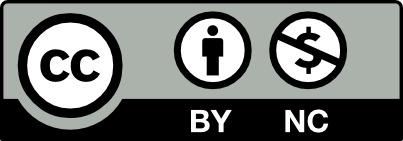Resident Behavior and Activity Pattern Influencing Electrical Consumption in Household Air Conditioners in Tripoli - Libya
DOI:
https://doi.org/10.51646/jsesd.v11i2.141الكلمات المفتاحية:
Electric power,، domestic sector,، air-conditioning.الملخص
Air conditioning systems are essential in the Libyan residential buildings. This study focuses on the resident behavior and activity pattern that affecting electrical consumption related to the air conditioning systems, as part of applying energy efficiency standards and labels program. The data were collected using a questionnaire prepared for this purpose. Questionnaires were distributed on more than 150 families living in Tripoli-Libya, to determine the average number of air conditioners installed in each building, types of air conditioners, operating hours for each type, the average cooling capacity in (Btu/h), as well as the consumption rate during hot months. 103 responses out of 150 were collected and statistically analyzed using Excel sheet, while 10 incomplete responses were rejected. Results showed that more than 31 air conditioning brand names with different manufacturers and sizes are installed. Also, it was found that the average operating hours during the cooling period is 12.9hours/day, with average annual operating hours for each type is about 1430 hours/year. In terms of air conditioner cooling capacity, the most commonly used air conditioners are with a cooling capacity of 12,000Btu/h, and about 1926hours/year. Then the 18,000Btu/h with about 1880 hours/year. While the lowest used air conditioners are with a cooling capacity of 9000Btu/h are about 1214hours per year. It is also evident that the most relatively acquired types are the cheapest air conditioning systems regardless the energy efficiency criteria.
التنزيلات
المقاييس
المراجع
IEA(2018), “The Future of Cooling,” OECD, May 2018. doi: 10.1787/9789264301993-en.V. Vakiloroaya, B. Samali, A. Fakhar, and K. Pishghadam, “A review of different strategies for HVAC energy saving,” Energy Convers. Manag., vol. 77, pp. 738–754, 2014, doi: 10.1016/j. enconman.2013.10.023. DOI: https://doi.org/10.1016/j.enconman.2013.10.023
A. Al-Mumin, O. Khattab, and G. Sridhar, “Occupants’ behavior and activity patterns influencing the energy consumption in the Kuwaiti residences,” Energy Build., vol. 35, no. 6, pp. 549–559, 2003, doi: 10.1016/S0378-7788(02)00167-6. DOI: https://doi.org/10.1016/S0378-7788(02)00167-6
A. Fathi, A. El Bakkush, F. Bondinuba, and D. Harris, “Exploring the Energy Consumption Dimensions of a Residential Building in Tripoli, Libya,” Int. J. Eng. Res. Technol., vol. 4, 2015.
M. G. Ignjatovic, B. D. Blagojevic, M. M. Stojiljkovic, and A. Andjelkovic, “Optimization of HVAC system operation based on a dynamic simulation tool,” The REHVA, vol. 53, no. 6, pp. 56–62, 2016.
S. B. Andrew Hicks, Mohamed Ouf, William O’Brien, “The effect of occupant behavior on energy consumption in conventional vs. high-performance residential buildings,” in Proceedings of eSim 2018, the 10 conference of IBPSA-Canada Montréal, QC, Canada, May 9-10, 2018, pp. 394–403. Solar Energy and Sustainable Development, Volume (11) - Nth
L. Song, X. Zhou, J. Zhang, S. Zheng, and S. Yan, “Air-conditioning Usage Pattern and Energy Consumption for Residential Space Heating in Shanghai China,” Procedia Eng., vol. 205, pp. 3138–3145, 2017, doi: 10.1016/j.proeng.2017.10.139. DOI: https://doi.org/10.1016/j.proeng.2017.10.139
D. Wang, A. Ukil, and U. Manandhar, “Building HVAC load profiling using EnergyPlus,” Proc. 2015 IEEE Innov. Smart Grid Technol. - Asia, ISGT ASIA 2015, no. November, 2016, doi: 10.1109/ISGT-Asia.2015.7386983. DOI: https://doi.org/10.1109/ISGT-Asia.2015.7386983
H. A. Magouz, “The effect of using high-efficiency air conditioners on rationalizing consumption in the General Electricity Company buildings,” in The Second Engineering Conference Engineering Association Branch of Zawia, 2019, pp. 283–297.
S. M. Alabani and I. H. Tawil, “The Strategy of Implementing Energy Efficiency Standards and Labels for Domestic Air Conditioners in Libya,” Sol. Energy ans Sustain. Dev., vol. 8, no. 1, pp. 19–28, 2019, [Online]. Available: http://jsesd.csers.ly/images/pdf/vol-008-01/vol-00801-05.pdf. DOI: https://doi.org/10.51646/jsesd.v8i1.28
GECOL, “Annual Report of General Electric Company of Libya (GECOL),” Tripoli, Libya, 2010. [Online]. Available: https://www.gecol.ly/Gecol_ly/DetailsReports.aspx.
M. Abdunnabi and M. Musa, “Towards strategic plan for wide spreading of solar water heaters in Libya,” Sol. energy Sustain. Dev., vol. 2, no. June, pp. 11–25, 2013. DOI: https://doi.org/10.51646/jsesd.v2i1.35
REVOLVE, “Energy Efficiency for Appliances with a Focus on Air-conditioning The,” 2020.
N. Luiz A Horta, “Package of measures to promote efficient air conditioning: WEC ADEME project on energy efficiency policies,” 2013. doi: 10.13140/2.1.4395.0088.
“Air Cosaver,” Air Co- saver, 2021. www.airco-saver.com (accessed May 30, 2021).
M. S. Khawaja, D. Korn, and J. Keeling, “Summer Load Research for General Electric Company of Libya,” Portland, 2010.
التنزيلات
منشور
كيفية الاقتباس
إصدار
القسم
الرخصة
الحقوق الفكرية (c) 2023 Solar Energy and Sustainable Development Journal

هذا العمل مرخص بموجب Creative Commons Attribution-NonCommercial 4.0 International License.














